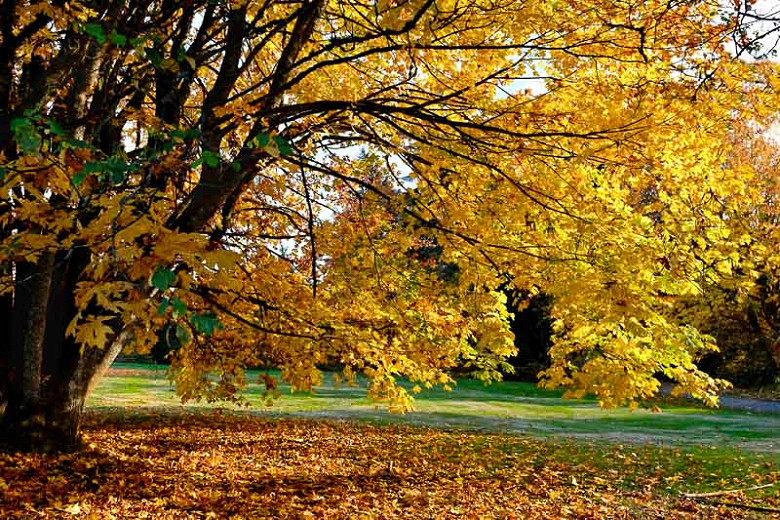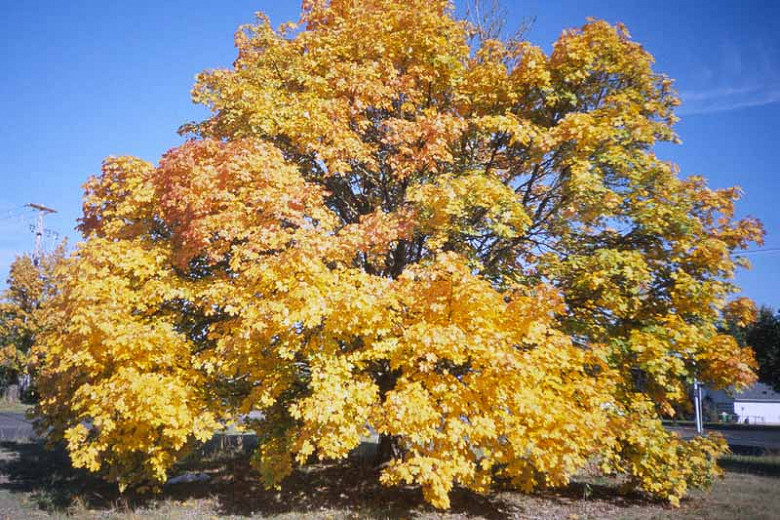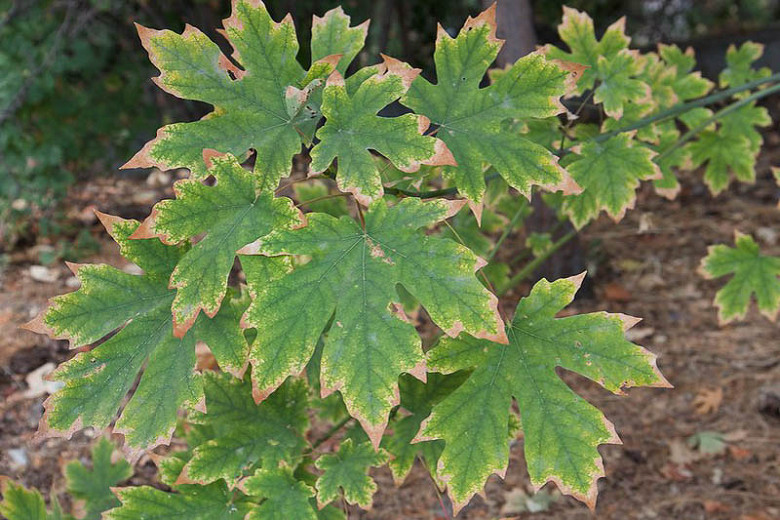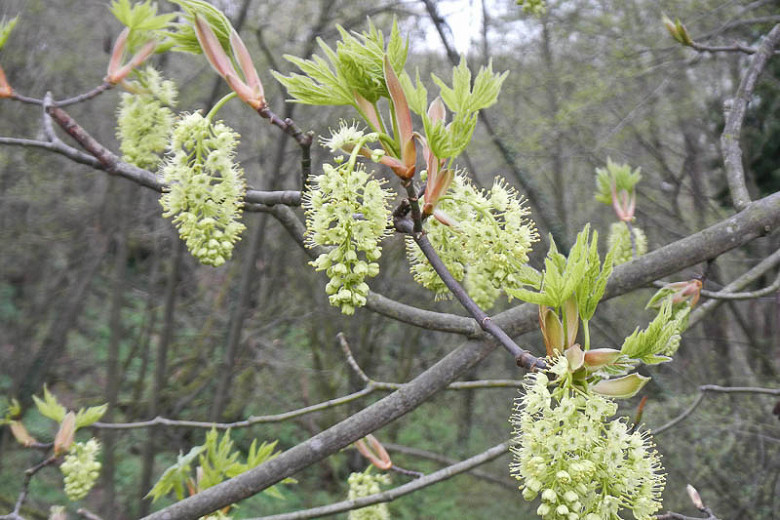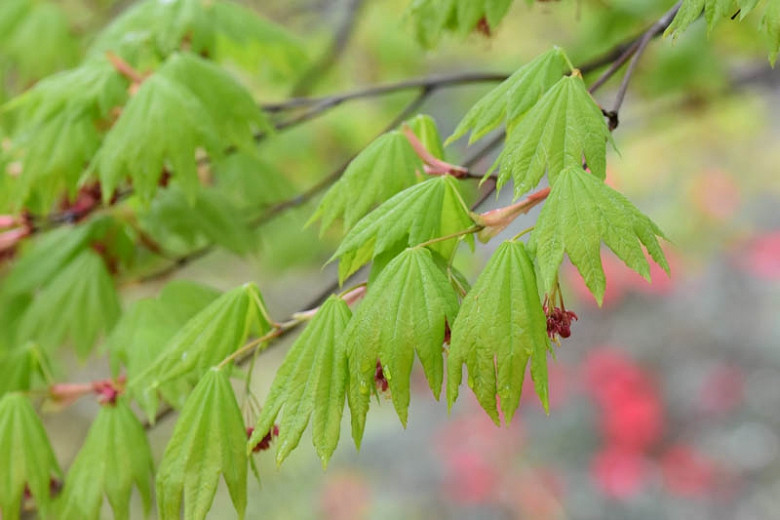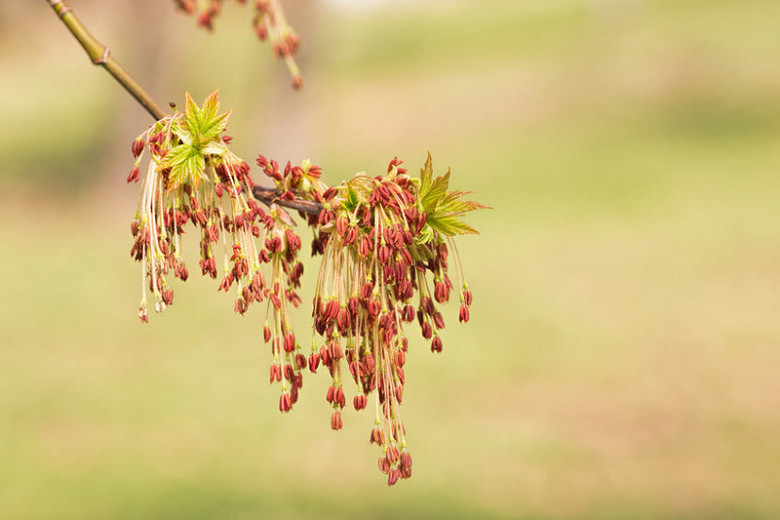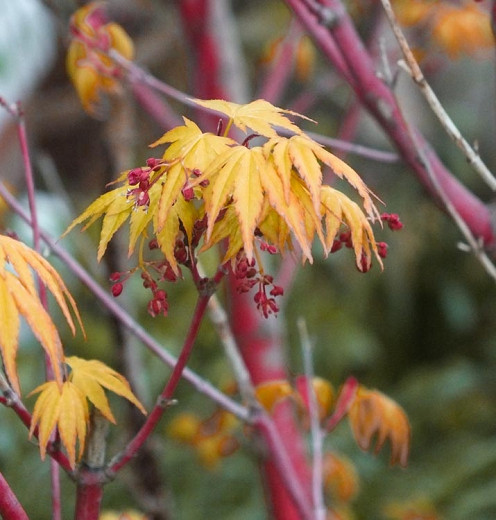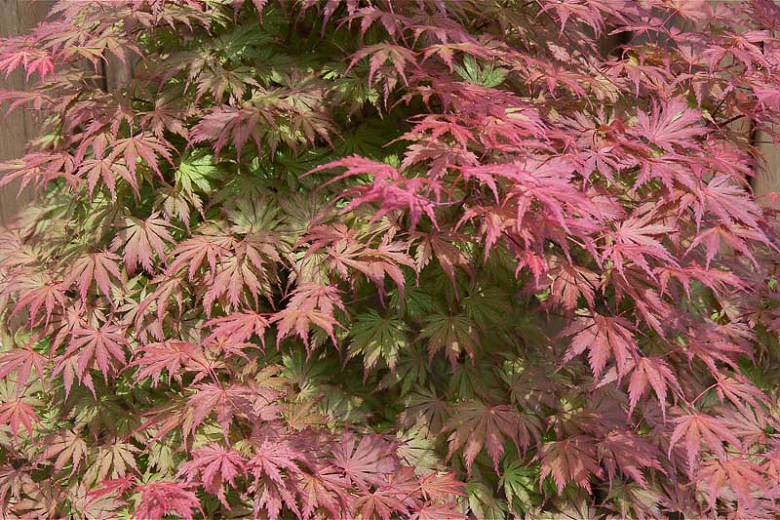Acer macrophyllum (Bigleaf Maple)
Popular on the Pacific Coast, Acer macrophyllum (Bigleaf Maple) is a large deciduous tree of upright habit with a broad, rounded crown of massive, spreading branches, steeply inclined at the tips. Emerging burgundy in spring, the deeply-lobed leaves, up to 12 in. across (30 cm), mature to dark green before turning brilliant shades of orange and yellow in the fall. These leaves are the biggest ever found on any species of maple, hence the common name. In spring, small, fragrant, yellowish-green flowers are borne in drooping clusters, 4-8 in. long (10-20 cm), packed with up to 175 tiny flowers. They give way to two-winged samaras, briefly tinged pinkish-red, before they turn brown when ripe. They persist on the tree in winter, like small Christmas ornaments. The bark is gray to reddish-brown and furrowed. Native to British Columbia, California, Oregon, Washington, Bigleaf Maple occurs naturally in moist woods and along streams in the lower elevations of the coastal ranges and northern Sierra Nevada mountains. The largest maple species in North America, Bigleaf Maple is an impressive shade tree that is particularly showy in autumn. Fast-growing, long-lived (50-200 years), Bigleaf Maple is important as a wildlife tree: many wildlife species use it for food and cover. Honeybees and other insects feed on the nectar. Mule deer, elk, mountain beavers, other rodents browse the foliage.
- Grows up to 40-70 ft. tall and wide (12-21 m).
- Performs best in full sun or part shade in moist, well-drained soils. Prefers clay or loamy soil, tolerates sandy soil and serpentine soil.
- Excellent shade tree for large landscapes and parks.
- Low maintenance, this plant needs little pruning. Remove diseased, damaged, congested or crossing shoots. Remove any shoots with green leaves.
- No serious pest or disease issues. Keep an eye out for aphids, verticillium wilt, horse chestnut scale.
- Shallow spreading roots can crack sidewalks and driveways.
- Propagate by seed.
- Native to British Columbia, California, Oregon, Washington.
Requirements
| Hardiness | 3 – 8 |
|---|---|
| Heat Zones | 1 – 8 |
| Climate Zones | 2, 2A, 2B, 3, 3A, 3B, 4, 5, 6, 7, 8, 9, 14, 15, 16, 17, 18, 19, 20, 21, 22, 23, 24 |
| Plant Type | Trees |
| Plant Family | Acer – Maples |
| Exposure | Full Sun, Partial Sun |
| Season of Interest | Spring (Mid,Late)Summer (Early,Mid,Late)Fall |
| Height | 40' – 70' (12m – 21m) |
| Spread | 40' – 70' (12m – 21m) |
| Water Needs | Average |
| Maintenance | Low |
| Soil Type | Chalk, Clay, Loam, Sand |
| Soil pH | Acid, Alkaline, Neutral |
| Soil Drainage | Moist but Well-Drained, Well-Drained |
| Characteristics | Showy |
| Native Plants | United States, California, Pacific Northwest, Oregon, Washington |
| Tolerance | Clay Soil |
| Attracts | Bees, Birds, Butterflies |
| Garden Styles | Prairie and Meadow |
